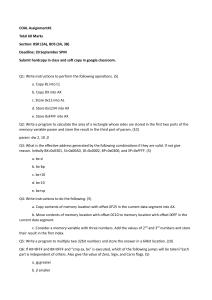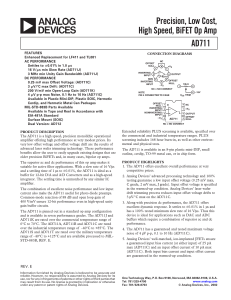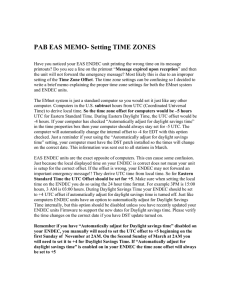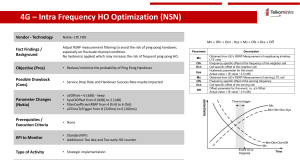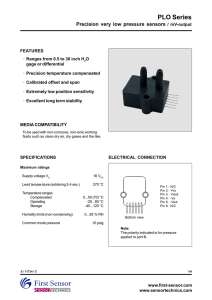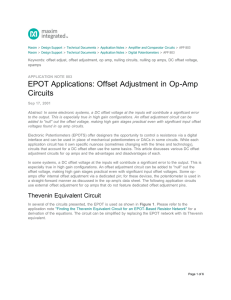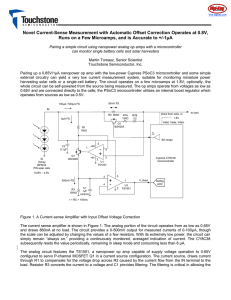Physical time alignment
advertisement
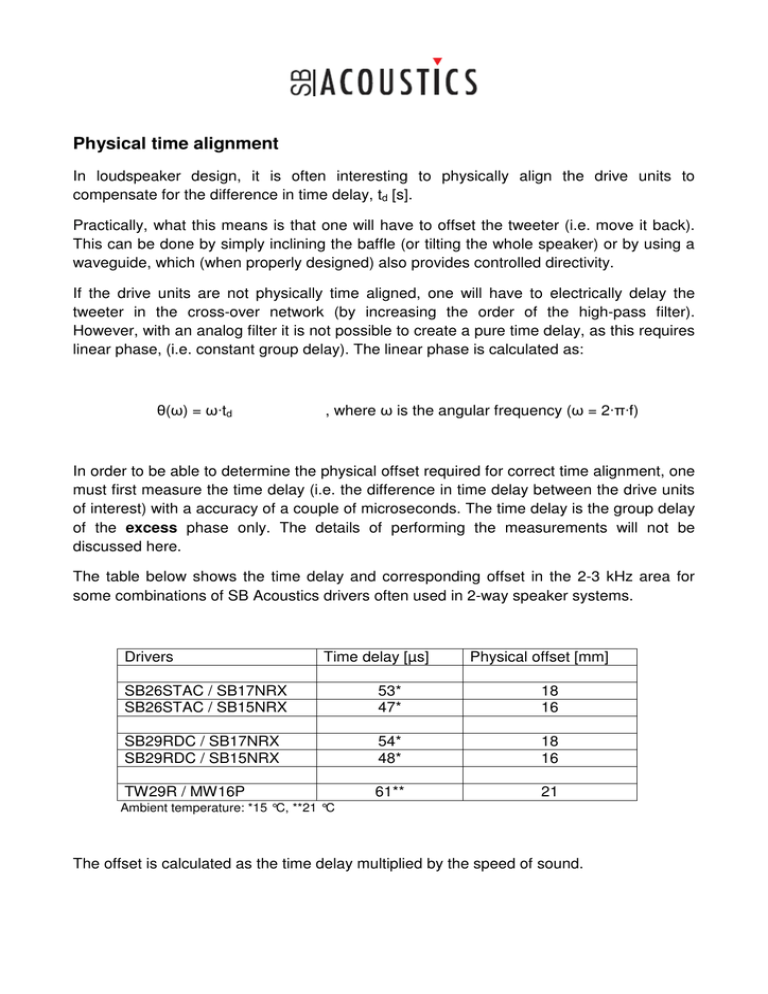
Physical time alignment In loudspeaker design, it is often interesting to physically align the drive units to compensate for the difference in time delay, td [s]. Practically, what this means is that one will have to offset the tweeter (i.e. move it back). This can be done by simply inclining the baffle (or tilting the whole speaker) or by using a waveguide, which (when properly designed) also provides controlled directivity. If the drive units are not physically time aligned, one will have to electrically delay the tweeter in the cross-over network (by increasing the order of the high-pass filter). However, with an analog filter it is not possible to create a pure time delay, as this requires linear phase, (i.e. constant group delay). The linear phase is calculated as: θ(ω) = ω·td , where ω is the angular frequency (ω = 2·π·f) In order to be able to determine the physical offset required for correct time alignment, one must first measure the time delay (i.e. the difference in time delay between the drive units of interest) with a accuracy of a couple of microseconds. The time delay is the group delay of the excess phase only. The details of performing the measurements will not be discussed here. The table below shows the time delay and corresponding offset in the 2-3 kHz area for some combinations of SB Acoustics drivers often used in 2-way speaker systems. Drivers Time delay [µs] Physical offset [mm] SB26STAC / SB17NRX SB26STAC / SB15NRX 53* 47* 18 16 SB29RDC / SB17NRX SB29RDC / SB15NRX 54* 48* 18 16 TW29R / MW16P 61** 21 Ambient temperature: *15 °C, **21 °C The offset is calculated as the time delay multiplied by the speed of sound.


